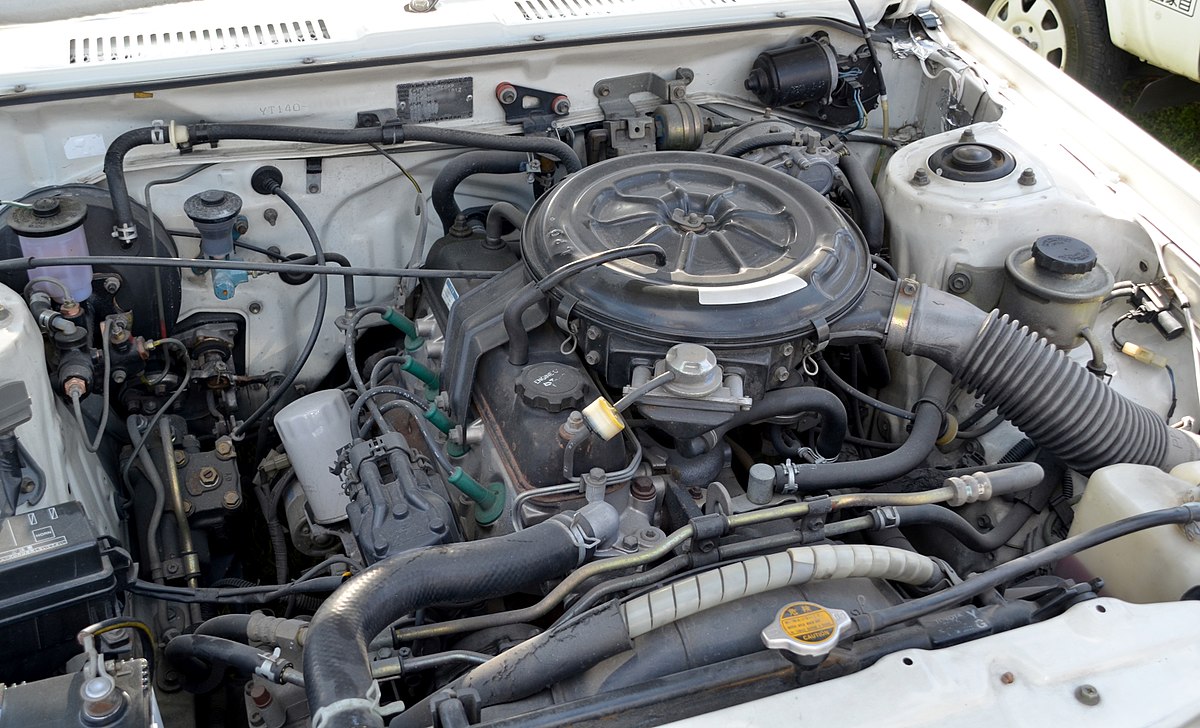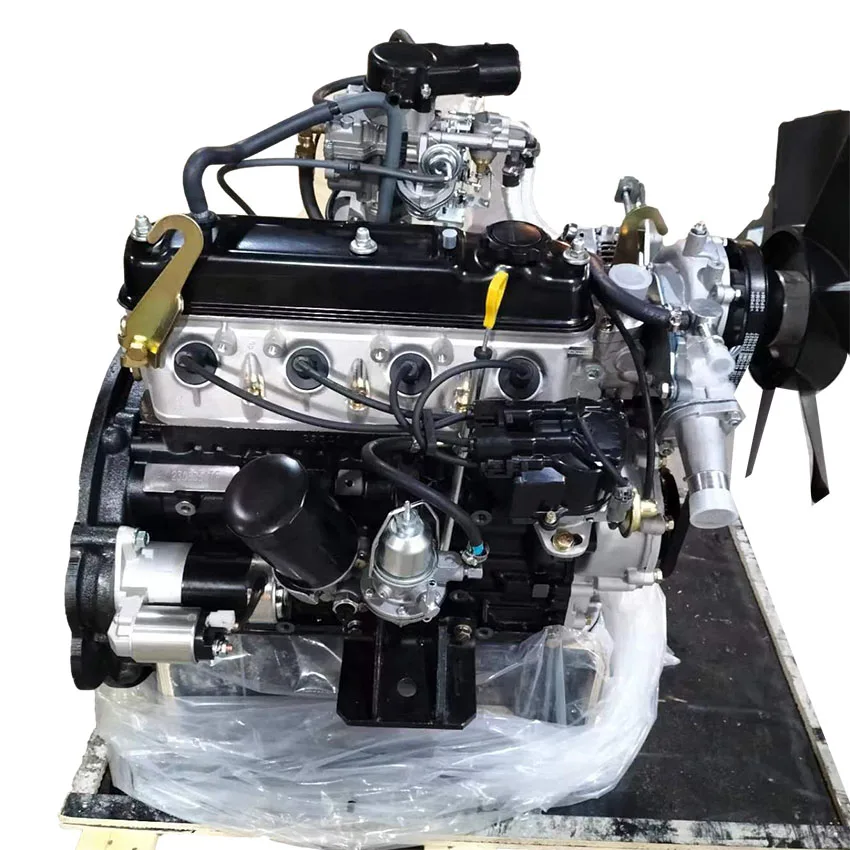Understanding the Mechanics Behind the 4Y Engine’s Power and Durability
Understanding the Mechanics Behind the 4Y Engine’s Power and Durability
Blog Article
Checking Out the Various Kinds of Engine: Which One Fits Your Needs?
Interior combustion engines continue to control due to their reliability, while electrical engines are acquiring traction for their sustainability. Crossbreed engines offer a functional compromise, and diesel engines stand out for their power in demanding applications.

Inner Combustion Engines
Interior burning engines (ICEs) are the foundation of contemporary transportation, powering a vast selection of automobiles from vehicles to aircrafts. These engines operate on the principle of transforming gas right into mechanical energy via a collection of regulated surges within a combustion chamber. One of the most typical types of ICEs include fuel engines, diesel engines, and rotating engines, each created to meet specific performance and effectiveness demands.
Gasoline engines usually use spark ignition, while diesel engines depend on compression ignition, leading to distinctive differences in fuel performance and power outcome (4y engine). Rotary engines, or Wankel engines, supply a compact design and smooth procedure, yet are much less generally made use of in mainstream applications
ICEs have actually gone through significant improvements in modern technology, consisting of the intro of turbocharging and fuel shot systems, which improve total efficiency and efficiency. In spite of their performance improvements, ICEs deal with enhancing examination as a result of their environmental impact, specifically pertaining to greenhouse gas discharges. As the automotive industry evolves, the future of ICEs continues to be a topic of debate, balancing performance, effectiveness, and ecological considerations. Nonetheless, they proceed to play a critical function in global transportation facilities.
Electric Engines
As problems about environmental sustainability and fossil gas reliance expand, electric engines have actually become a compelling choice to interior combustion engines. These engines make use of electric motors powered by batteries or gas cells, supplying a cleaner and much more efficient motive powers.
Among the primary benefits of electric engines is their reduced emissions. Unlike standard engines that burn nonrenewable fuel sources, electric engines create zero tailpipe emissions, considerably decreasing air pollution and adding to boosted public health. Additionally, the efficiency of electrical motors often surpasses that of internal combustion engines, converting a greater percentage of energy from the source of power into usable energy for movement.
Electric engines are likewise noteworthy for their peaceful operation, making them suitable for metropolitan environments. 4y engine. The simpleness of their style leads to fewer moving components, which can lead to minimized maintenance prices and increased reliability with time
Nonetheless, difficulties stay, including battery manufacturing influences, charging framework, and range restrictions. In spite of these hurdles, the expanding financial investment in electric vehicle modern technology and sustainable power resources factors toward an appealing future for electrical engines, positioned to play a crucial function in the transition towards sustainable transportation.
Hybrid Engines
Blending the benefits of both electric and typical inner combustion engines, hybrid engines stand for a flexible solution in the pursuit for effective and lasting transport. These engines combine a fuel or diesel engine with an electric motor, allowing for enhanced fuel effectiveness and lowered discharges contrasted to standard cars.
Crossbreed engines operate in several modes, utilizing the electric motor for low-speed driving and the interior combustion engine for greater rates or when even more power is required. This vibrant operation not just boosts fuel economic situation but likewise adds to a smoother driving experience. Regenerative braking is another vital attribute, capturing power commonly lost throughout stopping and redirecting it to recharge the battery.

As consumers progressively prioritize eco-friendliness, crossbreed engines attract attention as a practical selection, offering an efficient balance of performance, performance, and environmental responsibility. This flexibility makes them appropriate for city travelling and long-distance travel alike.
Diesel Engines
Effectiveness and power are trademarks of diesel motor, which have long been favored for their effectiveness and fuel economy. These engines operate the principle of compression ignition, where air is compressed to a heat prior to fuel is infused, igniting it without the need for ignition system. This process allows diesel engines to accomplish greater thermal discover this efficiency contrasted to fuel engines, translating right into far better fuel gas mileage and lower co2 emissions.
Diesel motor are specifically well-suited for sturdy applications such as vehicles, buses, and industrial machinery, where torque and durability are critical. Their style commonly includes stronger components to stand up to the greater stress created throughout operation, causing longer solution life and reduced upkeep prices.

Alternate Gas Engines
While diesel engines have lengthy dominated the landscape of sturdy source of power, different fuel engines are acquiring grip as sensible alternatives for an extra sustainable future. These engines make use of a range of gas, such as compressed gas (CNG), hydrogen, ethanol, and gas, aiming to lower greenhouse gas emissions and reliance on fossil gas.
One substantial benefit of alternate gas engines is their potential to reduced carbon impacts. CNG engines give off less pollutants contrasted to typical diesel engines, look what i found making them ideal for metropolitan transit systems and fleets seeking to boost air top quality. Ethanol, acquired from biomass, not only decreases exhausts however also supports farming economic climates.
Hydrogen fuel cells represent an innovative development in this world, offering zero-emission power with a chemical response between hydrogen and oxygen. Obstacles such as facilities growth and manufacturing costs stay obstacles to extensive adoption.
Verdict
Finally, selecting the proper engine kind necessitates cautious their explanation consideration of certain requirements and preferences. Interior burning engines offer integrity, while electric engines prioritize sustainability and reduced maintenance. Crossbreed engines integrate the benefits of both, enhancing performance, whereas diesel engines supply exceptional power and torque for durable applications. Alternate fuel engines present environment-friendly choices, albeit with potential framework challenges. Ultimately, an extensive evaluation of driving practices and ecological values will certainly help with an educated decision concerning engine selection.
Crossbreed engines provide a flexible compromise, and diesel engines stand out for their power in requiring applications. The most common types of ICEs include gas engines, diesel engines, and rotary engines, each developed to satisfy certain efficiency and performance requirements.
Unlike typical engines that shed fossil gas, electric engines produce absolutely no tailpipe discharges, substantially decreasing air pollution and contributing to improved public health.Crossbreed engines run in several settings, using the electrical motor for low-speed driving and the interior burning engine for greater rates or when more power is required. Crossbreed engines integrate the advantages of both, boosting effectiveness, whereas diesel engines give premium power and torque for sturdy applications.
Report this page